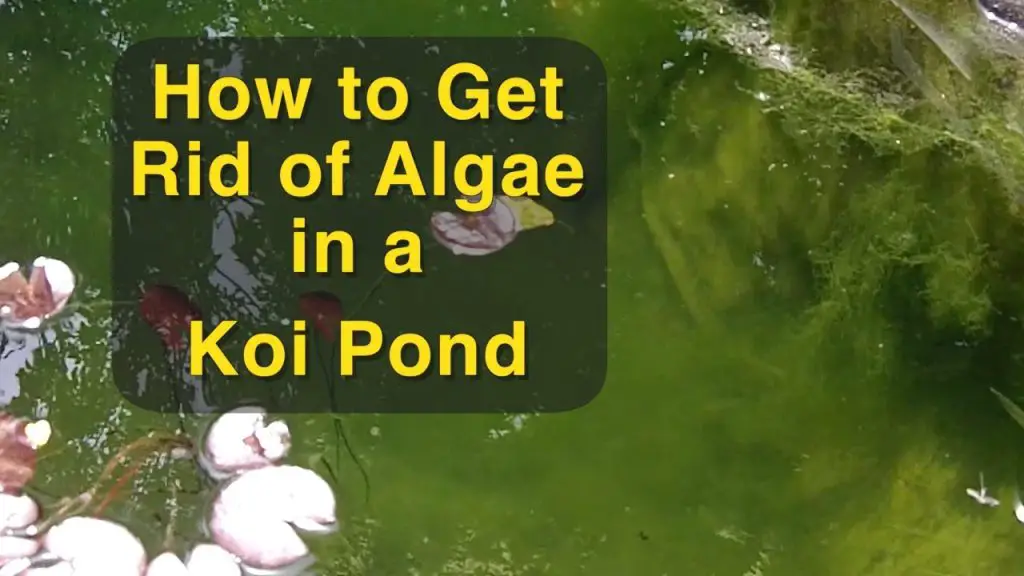Algae are a common problem in fish ponds that can affect the overall health of your aquatic environment. Excessive algae growth can deplete oxygen levels, block sunlight, and lead to poor water quality. Fortunately, there are several effective methods to control and eliminate algae in your fish pond. Let’s explore some practical solutions to help you maintain a clean and healthy pond for your fish.
1. Proper Pond Maintenance
Regular maintenance is essential to prevent algae overgrowth in your fish pond. Here are some maintenance tips to keep your pond clean:
- Remove debris and fallen leaves from the pond regularly.
- Trim back overhanging vegetation to reduce nutrient input.
- Monitor and maintain proper water pH and temperature levels.
- Install aeration systems to increase oxygen levels in the water.
2. Natural Algae Control Methods
Utilizing natural methods to control algae growth can be an effective and eco-friendly approach. Consider the following natural solutions:
- Introduce aquatic plants like water lilies and lotus to compete with algae for nutrients.
- Add barley straw or barley straw extract to the pond, which releases compounds that inhibit algae growth.
- Use beneficial bacteria products to break down organic matter and reduce nutrient levels in the water.
- Employ ultraviolet (UV) clarifiers to control algae blooms by disrupting their reproductive cycle.
3. Chemical Treatments
In severe cases of algae infestation, chemical treatments may be necessary to eradicate algae quickly. It is essential to use these treatments cautiously and follow the instructions carefully to avoid harming your fish. Some common chemical treatments include:
- Algaecides: Chemical compounds that kill algae cells and prevent their regrowth.
- Copper sulfate: Effective in controlling algae, but excessive use can be harmful to fish.
- Potassium permanganate: Oxidizing agent that eliminates algae and other organic matter.

Credit: www.youtube.com
4. Mechanical Removal
Manual removal of algae is a straightforward method to reduce algae levels in your pond. Here are some mechanical removal techniques you can use:
- Use a pond skimmer or net to scoop out floating algae.
- Scrub algae off rocks, walls, and other surfaces in the pond.
- Install a mechanical filter to trap algae particles and prevent them from circulating in the water.
5. Adjust Feeding Habits
Overfeeding your fish can lead to excess nutrients in the water, promoting algae growth. Adjusting your feeding habits can help reduce nutrient levels and curb algae proliferation. Feed your fish only the amount they can consume in a few minutes to prevent leftover food from decomposing and adding to nutrient buildup.

Credit: www.wikihow.com
6. Shade and Water Circulation
Excessive sunlight can encourage algae growth in your pond. Providing shade with floating plants, water lilies, or artificial shade structures can help reduce sunlight exposure and inhibit algae development. Additionally, ensuring proper water circulation through the use of pumps or fountains can prevent stagnant areas where algae thrive.
7. Regular Water Testing
Regularly testing your pond water for pH, ammonia, nitrite, and nitrate levels can help you monitor water quality and detect imbalances that may contribute to algae growth. Maintaining proper water parameters is crucial for a healthy aquatic environment and can help prevent algae outbreaks.
8. Preventive Measures
Implementing preventive measures can help minimize algae growth and maintain a balanced ecosystem in your fish pond. Here are some additional tips to prevent algae problems:
- Avoid overstocking your pond with fish to prevent excess waste accumulation.
- Regularly clean and maintain pond filters to ensure optimal filtration efficiency.
- Consider adding shade plants or structures to reduce sunlight exposure.
- Practice proper plant and fish care to minimize nutrient input into the water.
By following these tips and implementing effective algae control strategies, you can keep your fish pond clean, clear, and healthy for your aquatic inhabitants. Remember to monitor your pond regularly, adjust your maintenance routine as needed, and enjoy a beautiful and thriving aquatic environment!




